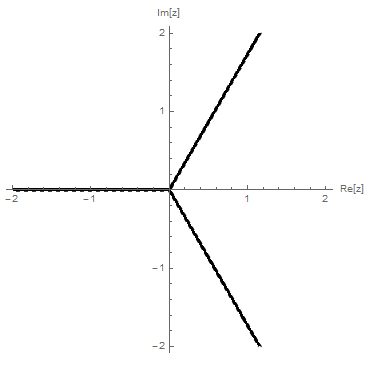In this case, ContourPlot can do the trick.
f[z_] := Log[z^3];
With[{z = x + I y}, ContourPlot[Im[f[z]], {x, -2, 2}, {y, -2, 2}, ClippingStyle -> Automatic, ExclusionsStyle -> {Black, Dashed},
Axes -> True, Frame -> False, Contours -> 1, ContourShading -> None,ContourStyle -> None, AxesLabel -> {"Re[z]", "Im[z]"}]]
